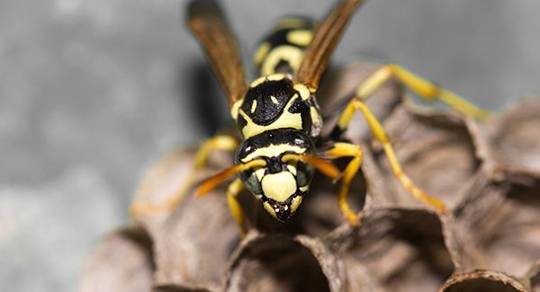Although most of us try to enjoy every bit of our too-short New England summers, most New Englanders would admit that there’s something special about autumn here in the Northeast. Cooler days and crisp nights, beautiful foliage... New England is a fantastic place to live in the fall.
Another great thing about fall is that we finally start to get a reprieve from some of the pests that have bothered us all summer long. We’re no longer being attacked by black flies or mosquitoes, but unfortunately, not all pests are ready to say goodbye quite yet.
Yellow jackets are one such pest. While it’s true that New England winters are too cold for yellow jackets to survive, if they’ve built their nests somewhere warm, like in your garage or even a shed, they may be able to live year-round. However, even if they don’t have a nest that will keep them alive through the winter when fall hits, yellow jackets go into survival mode. Because of this, fall is the most dangerous time of year when it comes to yellow jackets.
During the summer, these pesky wasps had plentiful food supplies and were busy bringing that food back to their nests to help feed developing larvae. In the fall, those larvae have grown, food supplies are dwindling, and yellow jackets start looking out for Number One. Anyone who interferes with their mission to find food, even if it’s accidental, will be met with aggression.
Even in the summer, yellow jackets are easily provoked and thought to cause more stings than any other insect, but in the fall they become worse. To add insult to injury, unlike bees, yellow jackets don’t lose their stinger when they attack, so it is possible to get stung multiple times by the same wasp.
Yellow jacket stings are painful, to say the least, but if you are allergic to them, they are downright dangerous. One sting is enough to cause a potentially severe reaction, but multiple stings are even more likely to cause a reaction, including anaphylaxis.
If you’ve noticed yellow jackets around your New England home this fall, don’t give them the chance to find a place where they’ll survive the winter. They are a danger to you and your family now, and if they have a chance to build a year-round nest, their numbers will only increase next spring and summer.
Although it may seem odd to call a pest control company for a stinging insect problem at this time of year, Big Blue Bug Solutions is here for just that kind of problem. We can safely eliminate yellow jacket nests, keeping you and your family safe in the process.
Autumn is a time when you want to enjoy the great outdoors. Don’t let yellow jackets stand in your way. Call Big Blue Bug Solutions today.

